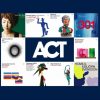With digital music streaming approaching 86% of the market in 2021, it’s probably fair to say that network players and streamers are becoming an essential component in any modern hi-fi system.
Naysayers will point out that over 3 billion people already own a network player in the form of a smartphone and therefore do not require another one at home.
Fair enough.
But are they even streaming 16-bit/44.1kHz lossless files to that Bluetooth speaker or soundbar?
What exactly are they listening to?
Bluetooth aptX Lossless is coming but how many smartphones or wireless headphones offer it now? I’ll bet you money your iPhone never supports it.
Most consumers probably see Bluetooth aptX HD and think that’s the highest possible sound quality.
Everyone slaps the “Hi-Res Audio” logo on their packaging in 2021 as if that means anything. Speakers? Come on.
“I don’t care about hi-res.”
Does 95% of the music listening audience even know what that means? I’m not so sure.
Qobuz and TIDAL have worked insanely hard at pushing the merits of hi-res audio and I’m sure they have converted some people with better quality equipment, or inspired them to audition better quality equipment — but how large of a group?
Spotify Hi-Fi? Is that really a thing? We’ve been waiting on it for most of 2021 after such a passionate video from Billie Eilish.
At the end of the day, I think most consumers who are forward thinking and envision a home filled with wireless loudspeakers and access to tens of millions of tracks should probably take a hard look at a well-designed network player or streamer and build outward from there. Your smartphone is never going to offer as much access or deliver the same level of sound quality.
Understand that there isn’t a single affordable digital network player that can do it all and offer support for every platform, casting technology, MQA, DSD, or 32-bit/384. And that’s perfectly fine.
That dilemma also applies to high-end digital network players as well. A high price does not guarantee support for every streaming service like Qobuz or TIDAL, or support for AirPlay 2, Chromecast, Tidal Connect, Spotify Connect, Bluetooth aptX HD or the forthcoming aptX HD Lossless formats.
The recent introduction of Apple Music with lossless streaming, and the forthcoming release of Spotify HiFi will force manufacturers to make a choice (and pay a hefty licensing fee) in regard to which streaming platforms they want to support natively with the best possible sound quality.
Will existing digital streamers support Apple Music with Spatial Audio? Will they require firmware updates for that to happen and when will that support show up?
Another feature to pay close attention to is the quality of the control app. They are not created equal and some of them are quite rudimentary in their functionality and often wonky from an operational perspective. Firmware updates often fix one problem and create another.

Bluemoon on Monday?
I know I’ve taken some time to get to the Bluesound NODE but I wanted to lay it all out there before you commit.
The NODE is one of the most comprehensive streamers with support for MQA, all of the major streaming services, AirPlay 2, voice control through Amazon Alexa, and comes equipped with an internal 32-bit/192kHz DAC.
That last part is important because it means that you can run the NODE directly into a preamp, integrated amplifier, or pair of powered/active loudspeakers as a source — no secondary DAC required.

The new NODE carries over the TOSLINK and Coaxial digital outputs from the previous Node 2i streamer, but I was more curious about the addition of a USB digital output for the first time. Bluesound and NAD have included USB on other components but they’ve only been used previously for firmware updates.
There have been promises before about USB on the NODE so I’m not commenting on its performance until Bluesound enable it with a firmware update.
The NODE now features an HDMI eARC input on the back panel, to keep your setup flexible and future-friendly. Designed to be as comfortable in a two-channel TV system or as it is in an audiophile’s dedicated listening room, the NODE provides a hi-res experience no matter where it’s used.
Wi-Fi connectivity, a Gigabit Ethernet RJ45 input, and support for two-way Bluetooth 5.0 aptX HD makes the NODE a very comprehensive solution for most users.
This Roon-ready device also plays well in the sandbox with other ecosystems aside from BluOS and sounds decidedly analog for a digital component. New compatibility with Tidal Connect is just additional icing on your Vachon cake.
The industrial design is most certainly minimalist and it works. There are also quick access controls like play/pause, track skipping, and volume on the touch panel at the top of the NODE, and those of you who enjoy talking to your devices (there’s a medical term for that) can go crazy with voice assistants like Siri, Alexa, or Google Voice
Advanced controls, including tone controls, subwoofer crossover optimization, and settings to enhance external DAC connections are available in the BluOS Controller app.

System Building
Adding the Bluesound NODE was easier for me because I already use the discontinued Node 2i streamer and have Bluesound wireless speakers playing in my kitchen as I type this out.
I used the NODE as both a standalone source device (RCA analog outputs) and as a network player connected to a number of external DACs and amplifiers with their own digital sections.
The NAD C 316BEE V2, Croft Phono Integrated, Audiolab 6000A, and Cambridge Audio Edge A Integrated Amplifiers all took drives around town with the NODE and there were never any compatibility issues.
I also ran the NODE with multiple pairs of active/powered loudspeakers from Acoustic Energy, Fluance, Bluesound, and Kanto.
Analysis Plus Black Digital, Audio Art AAC D1-SE2, and QED Performance Digital Audio cables were used throughout.
I did balance the Bluesound NODE on a trio of Black Diamond Racing Cones and box of Chanukah Sufganiyot on the 1st night of Chanukah but felt the changes in sound quality were only a minor miracle.

Sound
The Bluesound NODE definitely has its own sonic signature, but what’s fascinating to me is that it doesn’t sound dramatically different than the Node 2i; there are differences for sure, but those who were expecting “sell your kids and hockey card collection” will be slightly disappointed.
The Node 2i had a very distinct warm tonal balance that made it easy to integrate into a lot of different systems. It wasn’t really rolled-off at either extreme but it wasn’t the most detailed network player or streamer that I’ve heard either.
The NODE is slightly cooler or more neutral sounding than the Node 2i but that’s perfectly alright. The uptick in midrange clarity is a definite improvement and the treble certainly has more information while remaining fully under control.
Donald Byrd’s “Cristo Redentor” is one of my all-time favorite pieces of music and his trumpet solo makes me feel a wave of emotion depending on the time of day and the loudspeakers on the other end.
The Edge A is ten times the price of the NODE and I don’t think I could ask for anything more from the combination — it was so emotionally powerful with that track through my Magnepan LRS loudspeakers.
My vinyl copy sounds different; there is slightly more noise and imperfection in the sound but it’s still an out-of-body experience with the sun setting behind our home and the music flowing from the den into the kitchen where I sit and watch the Atlantic Ocean in the distance.
The NODE delivered Byrd, Davis, Dolphy, Tyner, Turrentine, and Lee Morgan with enough bite and attack to keep me captivated for hours and not long to return my Roon Nucleus back into the system. That’s pretty good for a $599 network player.
It doesn’t sound as warm and fuzzy as the Node 2i and perhaps that’s not a bad thing in the context of the Cambridge amplifier and Maggies. It struck a proper balance between presence and detail and I found myself looking for new albums to add to Qobuz and TIDAL during the process.
The Edge A is an unlikely partner for the $599 NODE, so I stepped backwards into reality and spent a lot more time with the affordable integrated amplifiers in my home and powered loudspeakers.

NAD C 316BEE V2 & Audiolab 6000A
Both the NAD and Audiolab integrated amplifiers make sense with the NODE for a myriad of reasons; cost, tonal balance, and system building.
The Audiolab 6000A is the more neutral sounding of the two amplifiers and its internal DAC allowed me to use the NODE as both a standalone source (using its own internal DAC) or a network player running through the 6000A’s DAC.
If you’re running the Audiolab though a really warm sounding pair of loudspeakers; Wharfedale, Q Acoustics, older ProAcs and Spendor models — I think you’re fine with either configuration but my personal choice would be to use the Bluesound’s DAC.
The analog outputs on the NODE present music with a lot more body and texture compared to the coaxial digital output into the Audiolab; there is a definite uptick in clarity and detail but it might be too much of a good thing with loudspeakers that feature a brighter tonal balance.
The NAD C 316BEE V2 integrated amp is warmer in the midrange and certainly not as transparent sounding as the Audiolab. Both products are made by the same people and the synergy between the two was obvious from the first few albums.
Amy Winehouse’s “Valerie” (Amy, Qobuz, 24-bit/44.1kHz) has enormous presence but it’s also a tad hot sounding with some equipment; the Audiolab/Bluesound combination using the digital outputs confirmed what I felt was true — the NODE sounds better and warmer through its own DAC and analog outputs.
My Wharfedale and Q Acoustics loudspeakers salvaged this track somewhat with their warmer and more laid back presentation but I’ve played this particular track through dozens of speakers and amplifiers over the years and there was something decidedly “digital” sounding about it that I did not enjoy.
I’ll have much more to say about the Bluesound NODE in the second part of the review; especially in regard to how it faired with active/powered loudspeakers and Bluesound’s wireless loudspeakers.
My early take is the Bluesound NODE ticks almost every single box but is capable of delivering much more if you’re willing to dig deeper into its capabilities and watch what you partner it with.
Continue reading: Bluesound NODE: The Audiophile System Builder
Where to buy: $599 at Amazon | Crutchfield

































Vlad the Impala
December 3, 2021 at 1:01 am
I have a couple of different integrations of the Node paired with a NAD M32 and Martin Logan towers and powered subs. Très satisfaisant!
Vlad the Impala
December 3, 2021 at 1:01 am
*iterations* was my intended choice of words, thank you spellcheck
Ian White
December 3, 2021 at 1:30 am
Vlad,
I like it too.
My Node 2i is making jealous noises.
IW
Friday Knight
December 3, 2021 at 9:07 pm
Bluesound Node connected to 1961 McIntosh 225 tube amplifier; 1964 Klipschorns are the speakers. I could not be happier.
Thanks.
Benjamin
December 15, 2021 at 7:46 pm
I really like the aesthetics, user interface and sound of the Node. I mostly play my library via Airplay but really love Bluesound’s proprietary “Radio Paradise” MQA radio station. Well curated and great sounding stuff!
I run my Node via optical output into an external DAC (Chord Qutest.) The optical output may sound smoother than the coax digital outputs and might be worth trying.
Cheers!
Dave
April 8, 2022 at 7:49 pm
Any thoughts on your experience with the 316bee + node relative to the powernode?
Despite differences in power/class/etc, given their equal setup cost & again being made by the same people, figured your take would be interesting.
Ian White
April 8, 2022 at 10:15 pm
Hi Dave,
The C 316BEE V2 is a wonderful integrated amplifier that I use every single day. The PowerNode has some advantages over it; it has a hi-res streamer built-in with BluOS as the operating system. It’s a wireless/BT device that can be drive from your laptop, smart phone, and tablet.
It is NAD’s class D technology versus class A/B in the C 316BEE V2.
I prefer the sound of the C 316BEE V2, but you need to spend $549 for the NODE to get all of the features of the PowerNode.
It really depends on the speakers to be honest. If you don’t listen to vinyl, I would buy the PowerNode and not look back.
Best,
Ian White
Dave
April 9, 2022 at 7:16 pm
Thanks for the take, Ian!
Have been running a pair of PSB imagine minis with the 316bee (v1) for the last 10 years, streaming countless genres from spotify via an airport express v1 (at low volumes around 60db in my living room). It’s fine, it works.
The thought exercise of updating my 316bee with the node (naïvely hoping I will hear an improvement over the AE by changing that alone) has led to deliberation of adding power to the minis for low volume listening (enter idea of just getting the powernode) and/or replacing the imagine mini with something less fussy for off axis listening as I roam around (maybe amphion argon1 or similar).
I digress- thanks again for your thoughts and comments on the sound of the 316bee vs powernode.